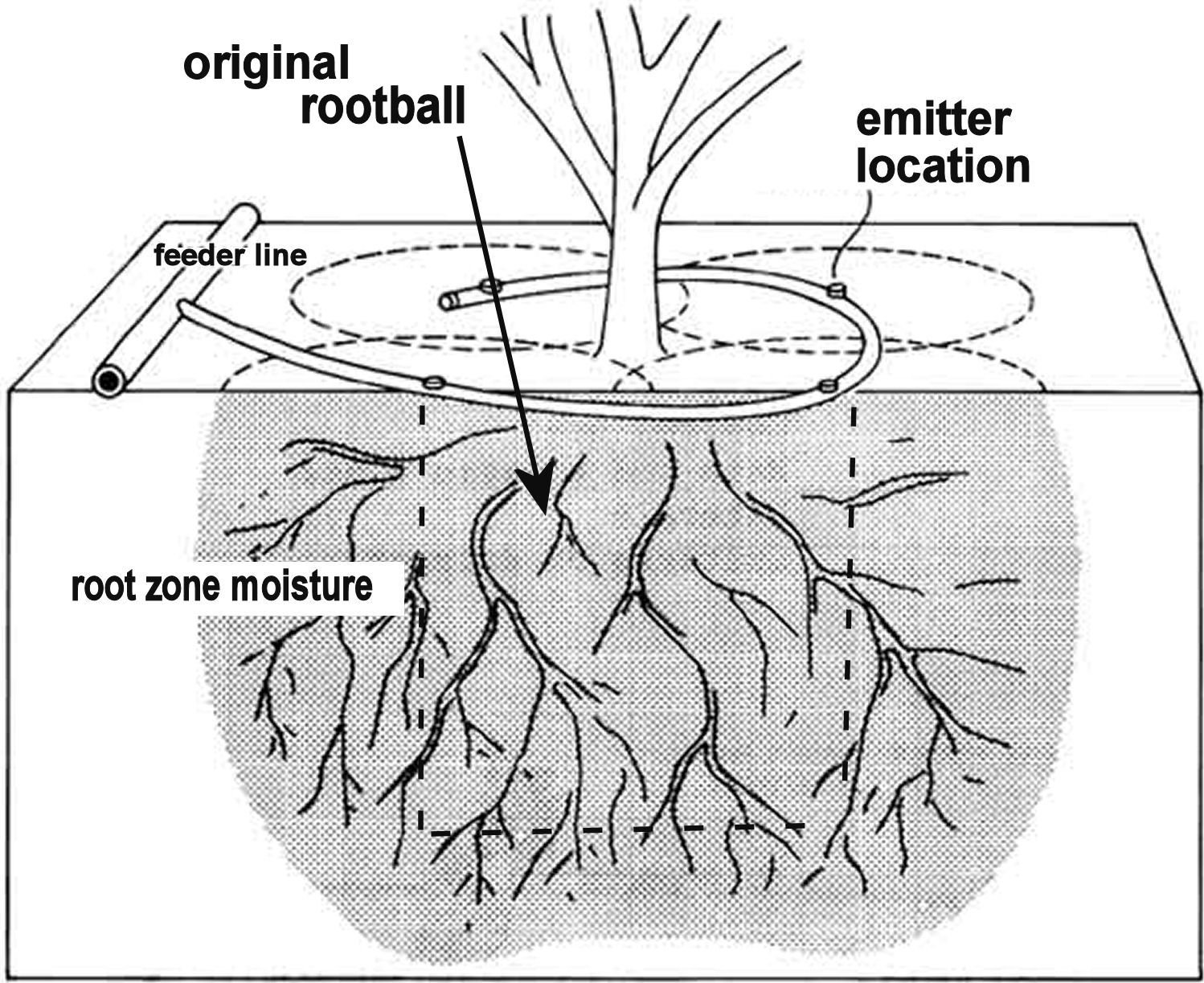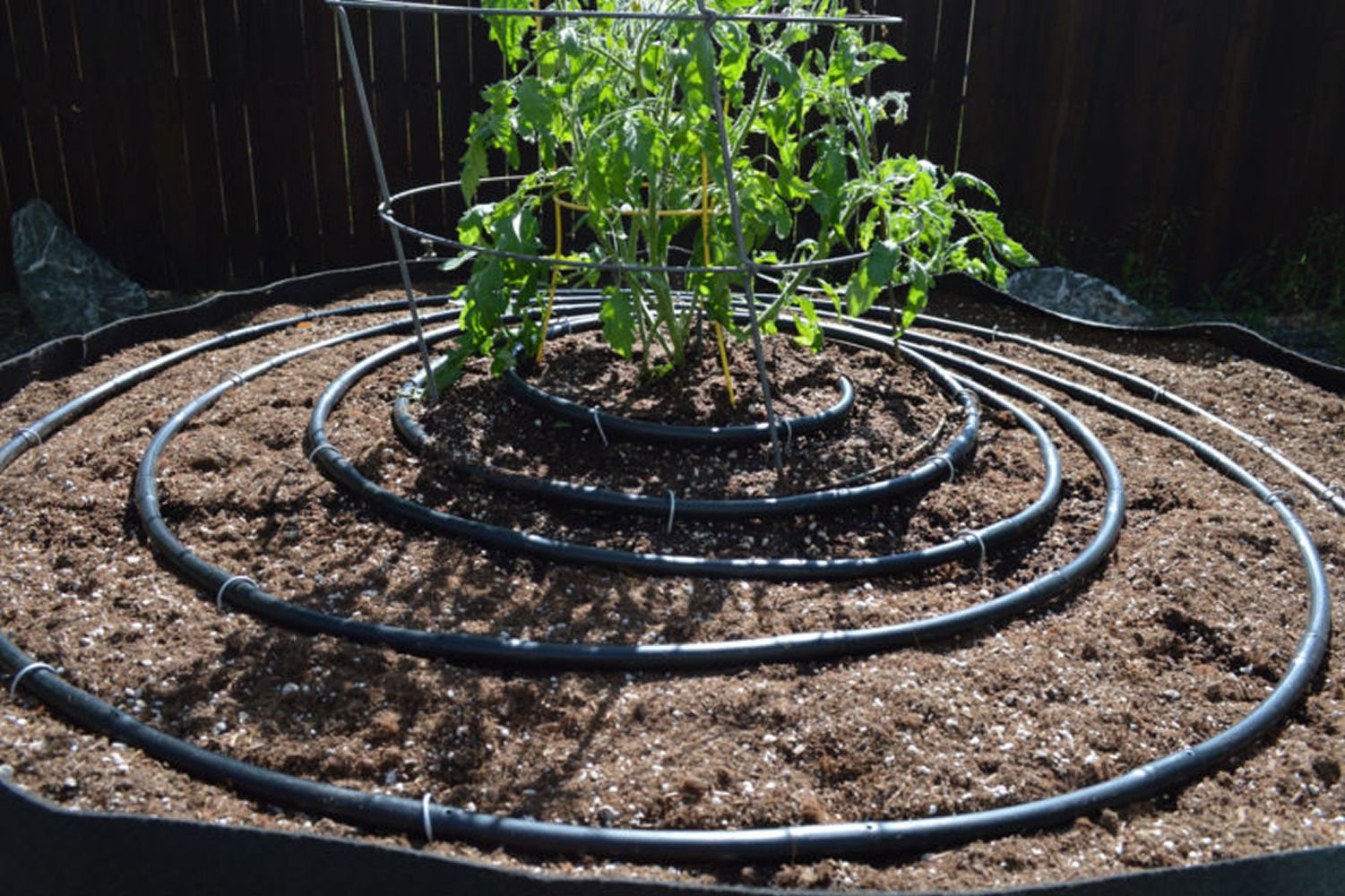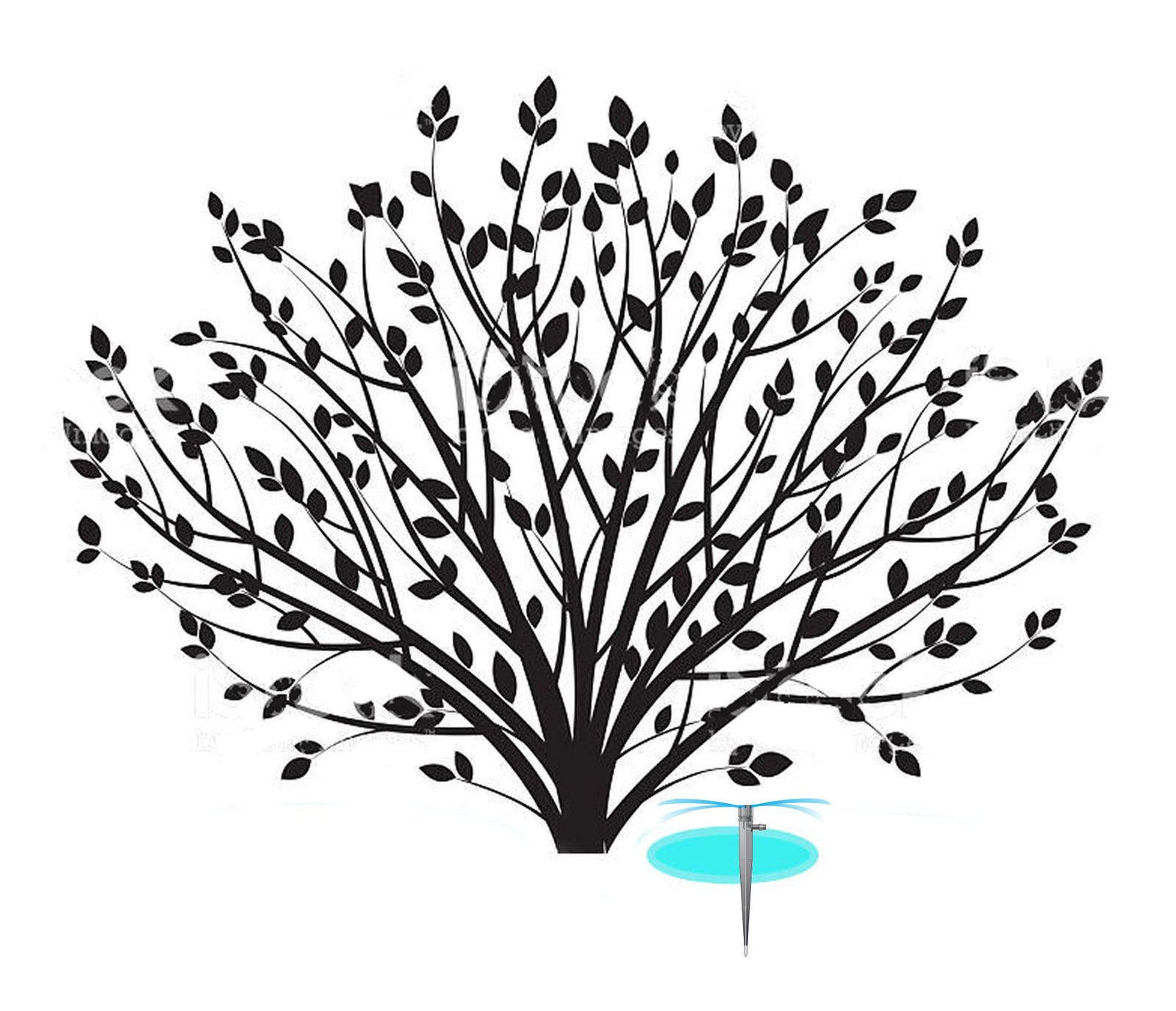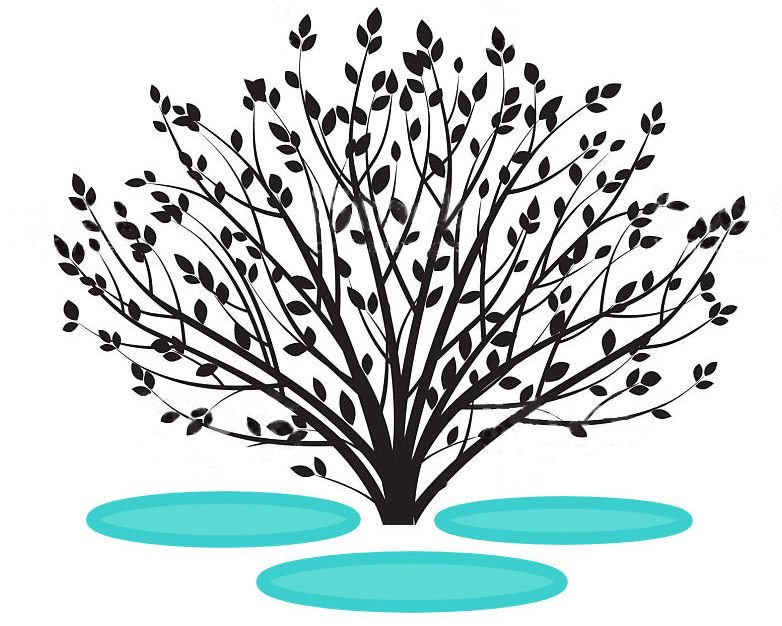
Irrigation Options
Dripperlines for New Plants
Dripperlines for New Plants
Garden Tip
TB1114
TB1114
Technical Bulletin Series

|
Irrigation Options Dripperlines for New Plants |
Garden Tip TB1114 |
Technical Bulletin Series
|
| Providing superior water distribution for newly planted shrubs and trees is essential for expecting to have successful installation. |
| New plants initially have very limited root systems. Only those roots within the Nursery Pot exist and often many of these are traumatized during transplant. It is critical that the new little roots be placed into a significantly larger hole filled with good deep, moist soil. |

|
|
Here we can see that 4 emitters on a single dripperline
were installed to irrigate this new plant. Whether this plant is in a pot or in the ground,
this same technique of a single drippline with multiple emitters can easily be used.
For more emitters simply make the dripperline longer, and spiral it around the plant's base. The original rootball and the surrounding soil in the hole is receiving moisture. Because of this the roots have emerged from the initial rootball and growth is occurring. Watering needs to have a run time long enough to allow the moisture to penetrate to the bottom of the root zone. |

|
| In this photo a young plant has been installed and the irrigation dripperline spirals from the center outwards. This provides moisture throughout both the existing root system and the area outside this. Here, the driperline continues beyond the planting hole which assures good root growth in the future as the plant becomes large. |
|
The same drip application can be made for a Container Plant Here a "T" and loop are used, but a Spiral with end plug will work as well. 
Important points to remember! Provide enough emitters to distribute the water throughout the entire surface. With soilless organic mixes; water, over time will simply find the path of least resistance and leave hard & dry areas within the pot. Often, when hand watering or with high flow spray emitters the water travels to the edge and runs down the side. WATCH for and PREVENT this! |
|
To simply install a single shrubbler (like this) for a plant is asking for trouble.

|
| If the moisture happens to be sufficient for this plant initially, it rarely is wide enough for the plant after a couple years of growth. |
| Whether your choice is the use of spray shrubblers or dripperline, keeping to the principle of distributing the water throughout the Rootzone area is essential for the current and future health of the plant. |

Here is an example of helping to create better water distribution by adding emitter locations. This can be done with many different type emitters. |
| The "Garden Calculator Pro I" provides recommendations for installing a specific number of emitters and then running the system for a specified time in order to achieve the calculated water volume needed to adequately irrigate the soil surrounding the plant in question. As water expense is usually an concern, the Calculator also provides an estimate of the annual cost of watering the plant according to these specifications. You will find how low this cost really is. |
Using 6 inch spacing ¼ inch dripperline |

Economy Note: A section of dripperline with 6 inch spacing running for 10 feet costs approximately $1.80. As is seen this represents a very economical method for providing uniform moisture distribution around a new plant.
* The typical flow rate in gallons per hour (or 15 minutes) is based on a regulated water supply pressure of 30 psi. |
|
Using 12 inch spacing ¼ or ½ inch dripperline |

* Combined GPH is the typical flow rate in gallons per hour, based on a regulated water supply pressure of 30 psi.
|
|
These options will cover new plants from a 1 gallon nursery potup to a 24-inch box. As the size of the shrub or
tree gets larger, the surface area that requires irrigation must expand proportionately.
Look at Garden Tip TB1115 for a chart to help for larger sized shrubs and trees.
As plants become larger, their feeder roots (the smaller ones capable of up-taking nourishment) move away from the trunk; out towards the drip-line. Placement and size of the rings, or the spacings of the Spiral should be modified in order to maximize moisture at the optimum locations. Inspection and analysis of the surface roots can help to locate these areas. |